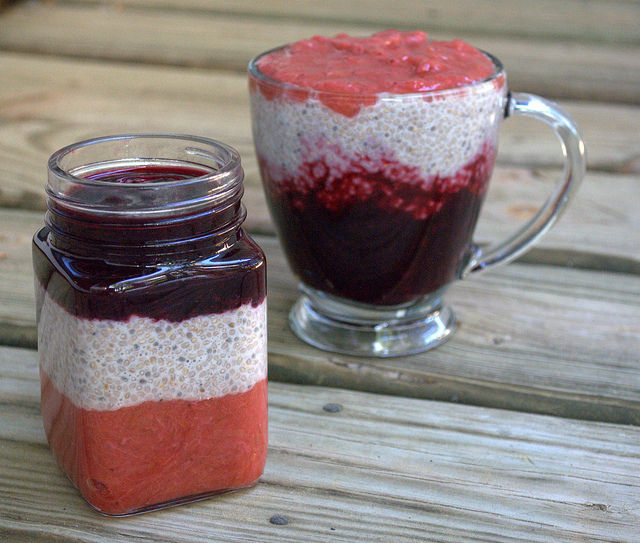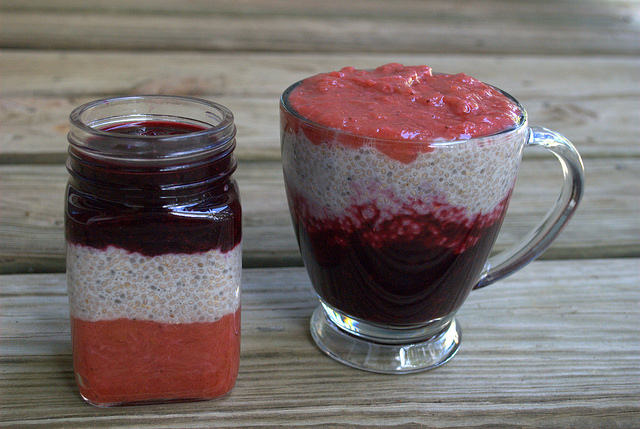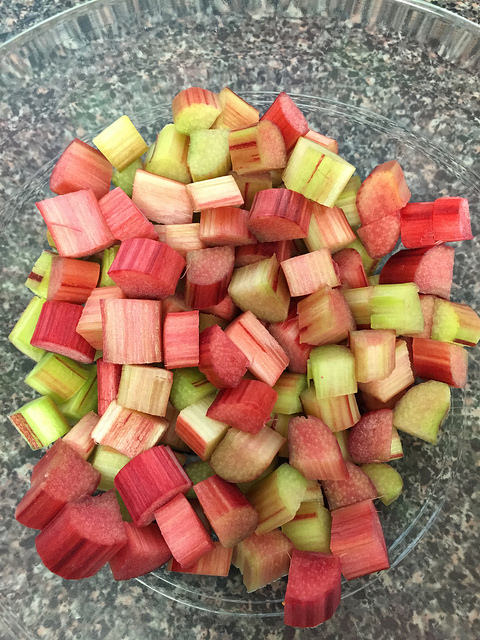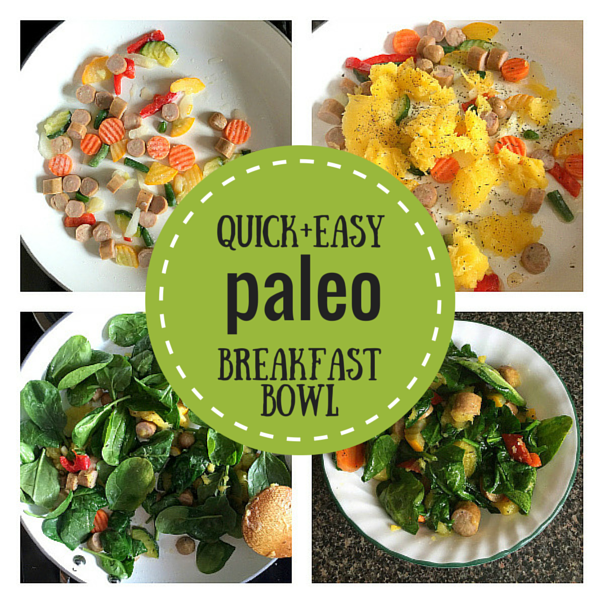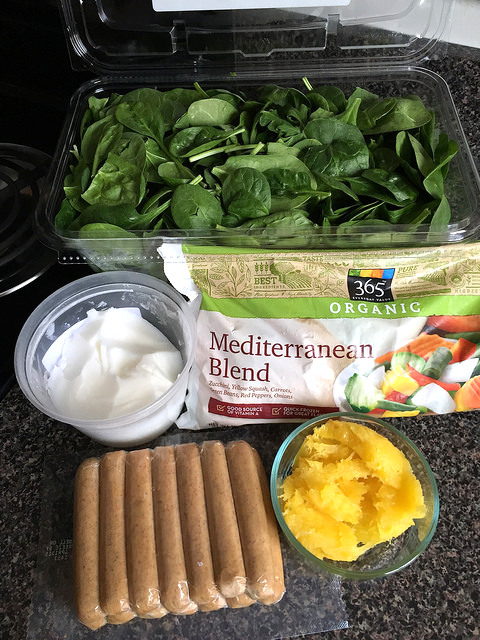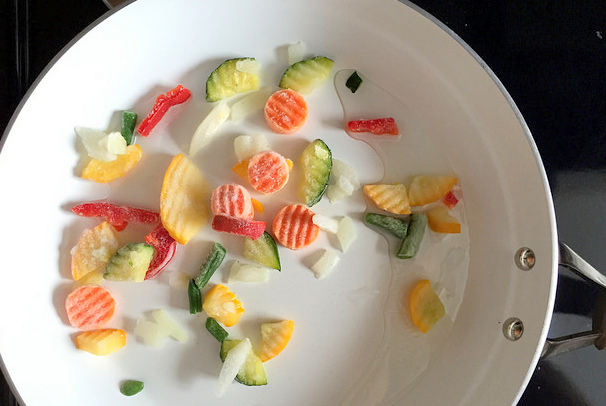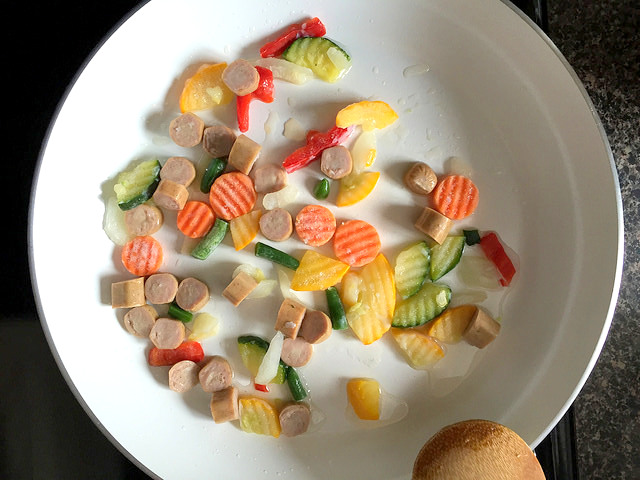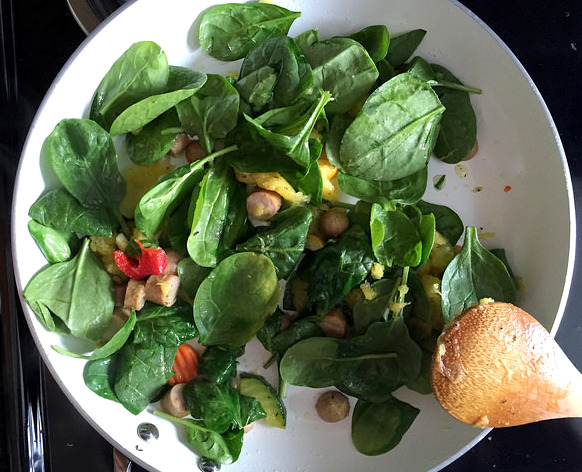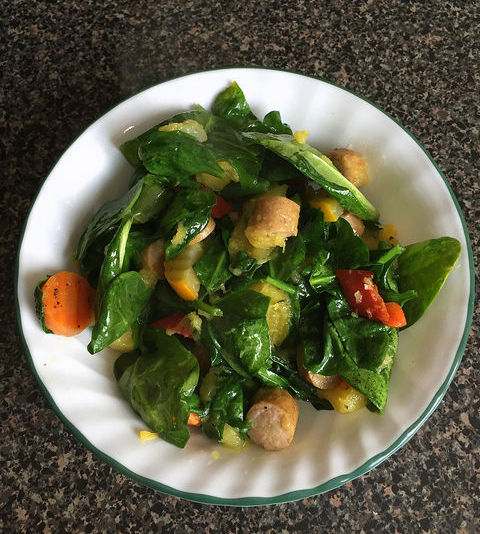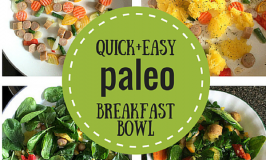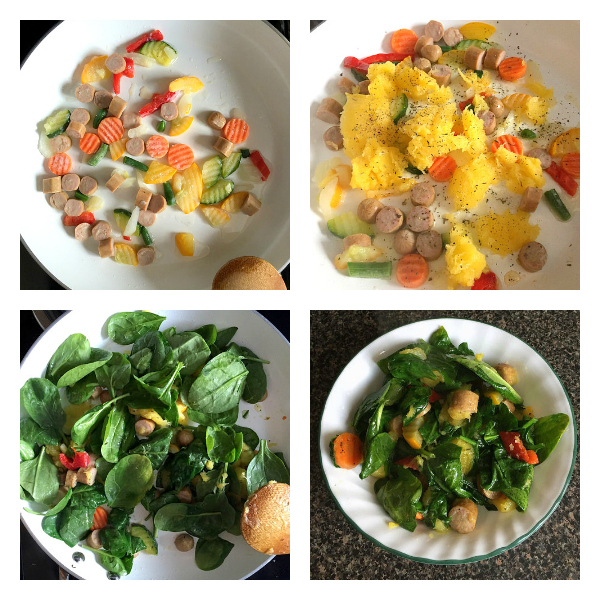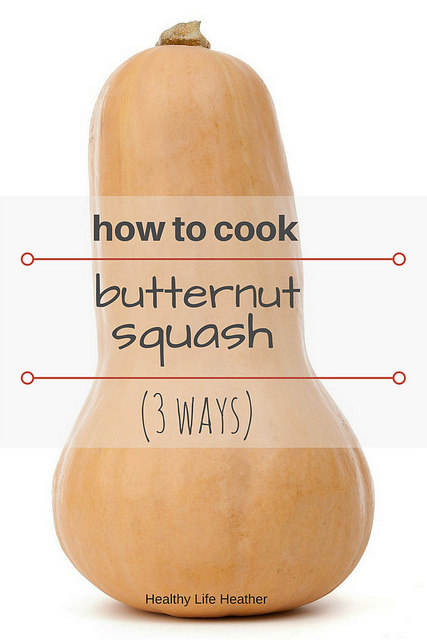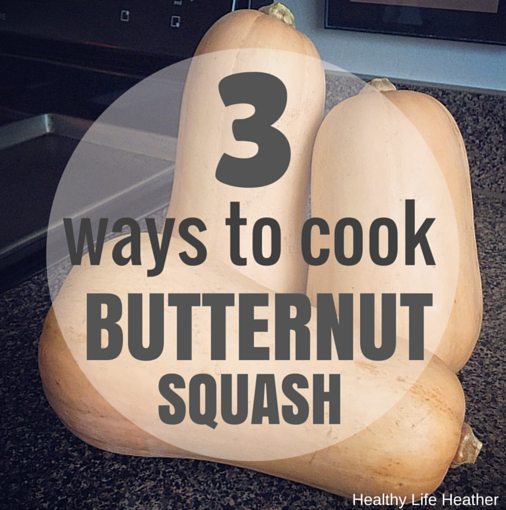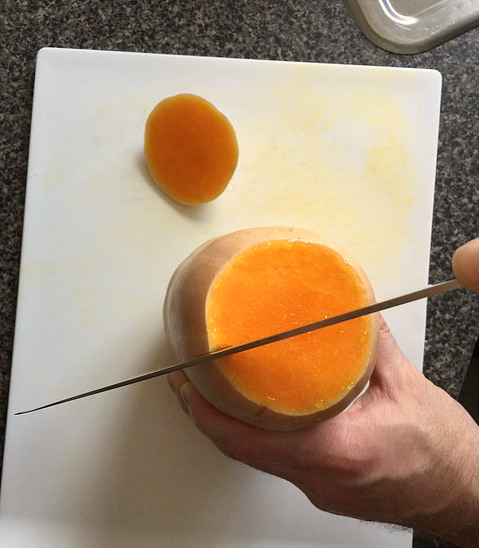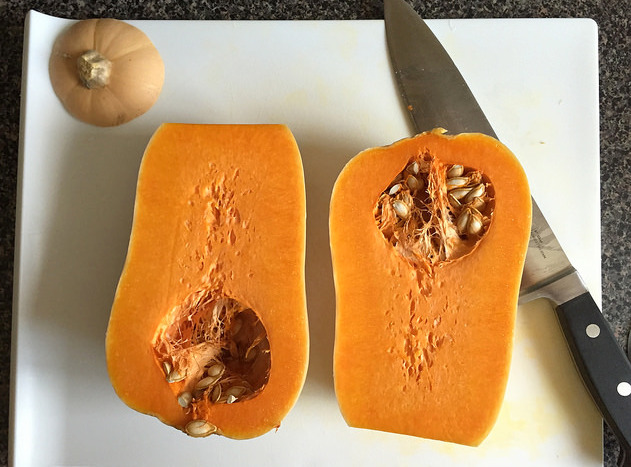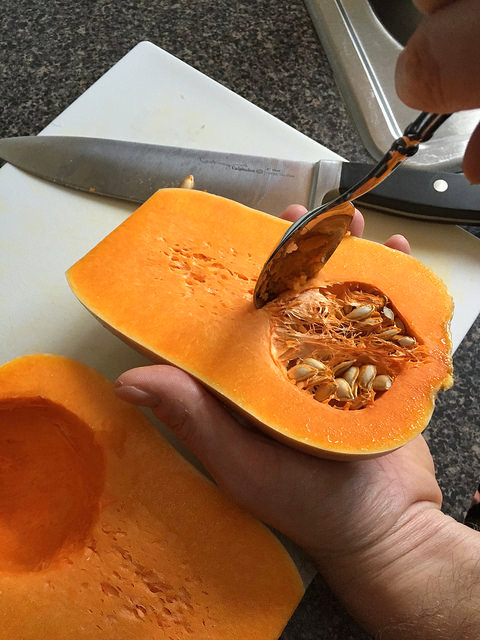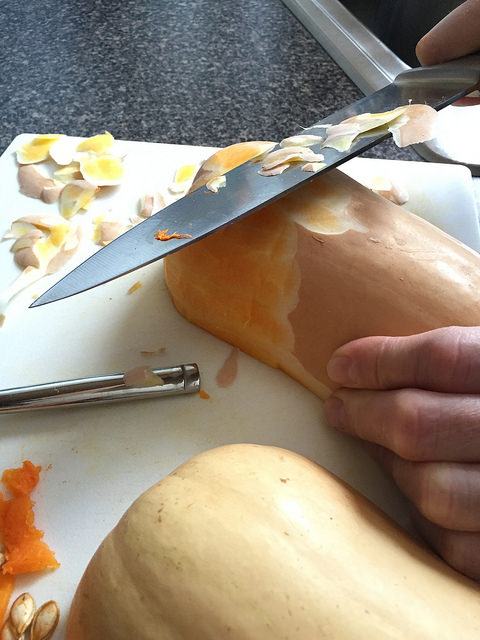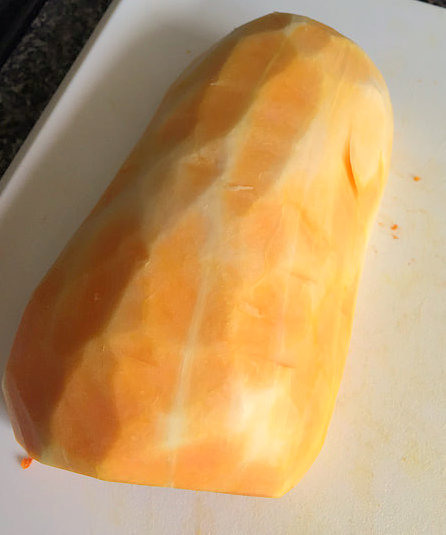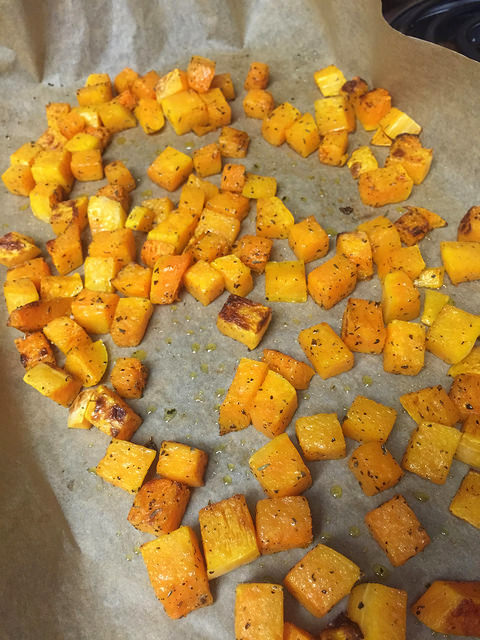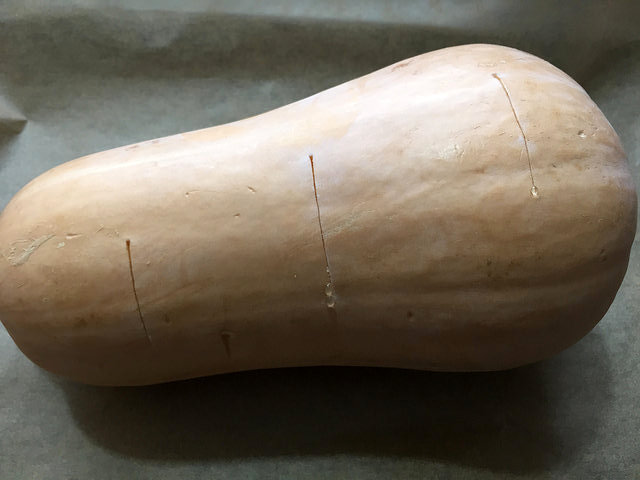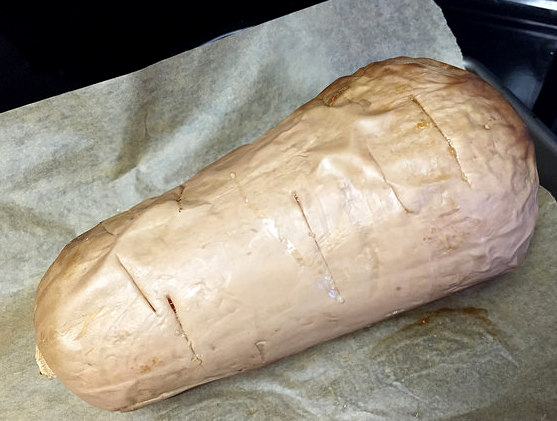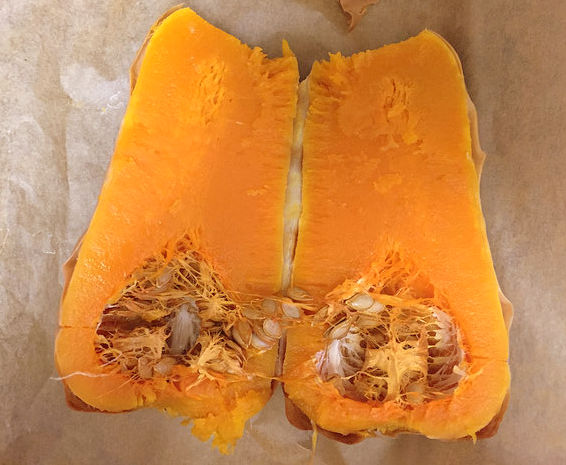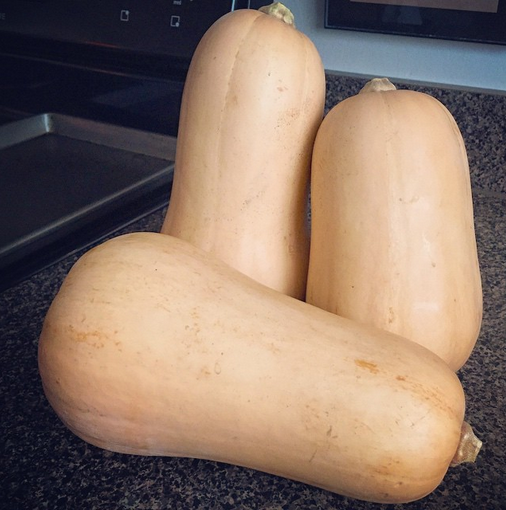Disclosure: This page contains affiliate links.
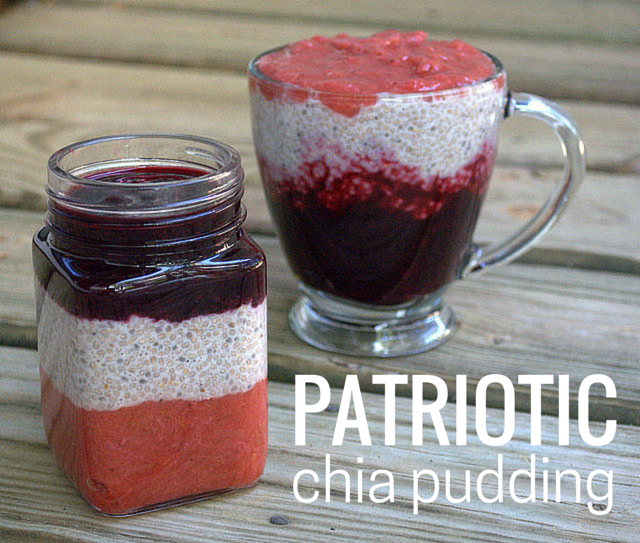
Red, white, and blue desserts are a staple at 4th of July celebrations.
Growing up, we often made the popular “American flag” cake, decorating a 9×13 cake with blueberries, strawberries, and whipped cream to look like the flag. A time or two, I made a poke cake with red and blue jello. And it was gooood.
But now that I’m paleo-ish for health reasons (and responding poorly to paleo staples like eggs and coconut), I need to find a new patriotic dessert for the 4th of July. Enter chia pudding.
I don’t think I’d tried a chia pudding recipe until last summer, but once I did, I was hooked.
First, chia seeds are all kinds of awesome. They’re often touted for being a nutrition superstar – a good source of fiber, protein, fat, antioxidants and several vitamins and minerals. And while chia seeds are thought of as a superfood with loads of health benefits, I mostly eat them because they seem to work well for my body (happy digestion) and mind (knowing there is a safe treat helps when you’re craving a sweet).
If you buy white chia seeds, chia pudding is (mostly) white. But a 4th of July chia pudding parfait isn’t a parfait without a red and blue layer! I love the late spring/early summer combo of strawberry and rhubarb, so choosing my red was easy. For the blue, I choose some beautiful plump blueberries.
If you’re looking for a healthy, festive dessert for Independence Day this year, add this red, white, and blue chia pudding parfait recipe to your menu!
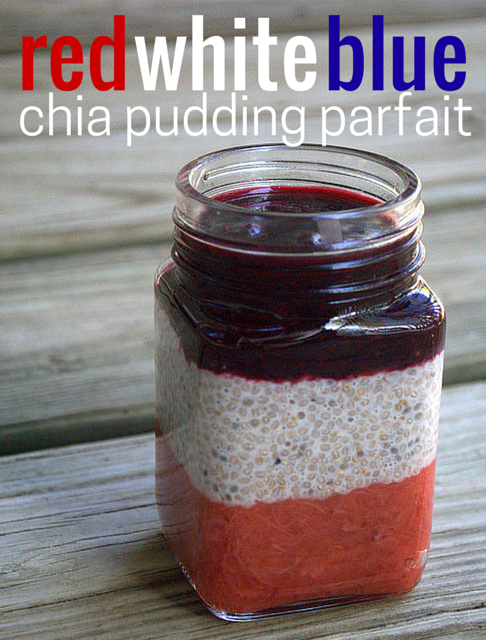
I got things going with the blue layer. Add some blueberries, water, and healthy sweetener to a pot. Cook until the berries burst, gently mash, and remove from heat to cool.
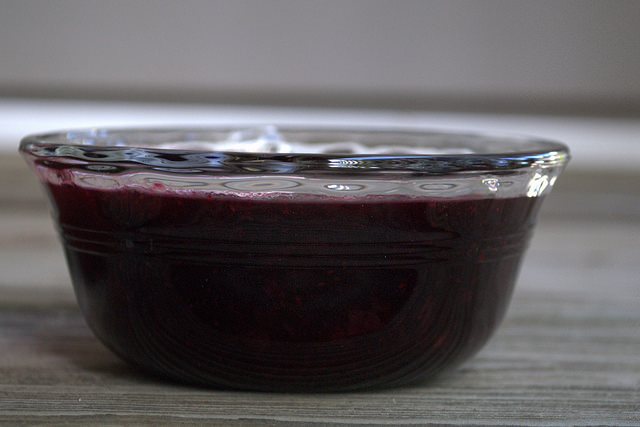
While the blueberries cooled, I prepped the red layer by coring and quartering strawberries and peeling and chopping rhubarb.
Add water and healthy sweetener (I like maple sugar) and fruit to a pan and heat until fruit is (gently) mashable.
Once the fruit layers are cooked and cooled and the chia pudding is made, you can store each layer separately in the fridge until you’re ready to layer and serve — the perfect dessert to make ahead of time! It’s so quick and easy to assemble.
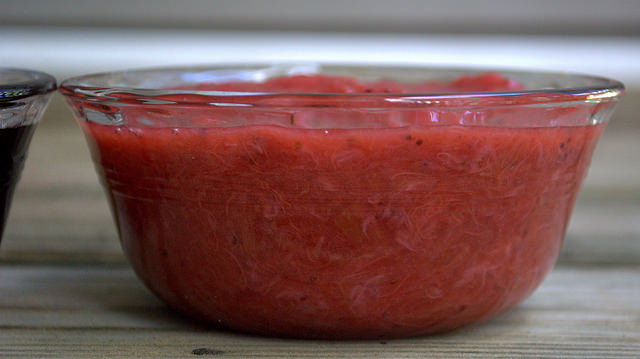
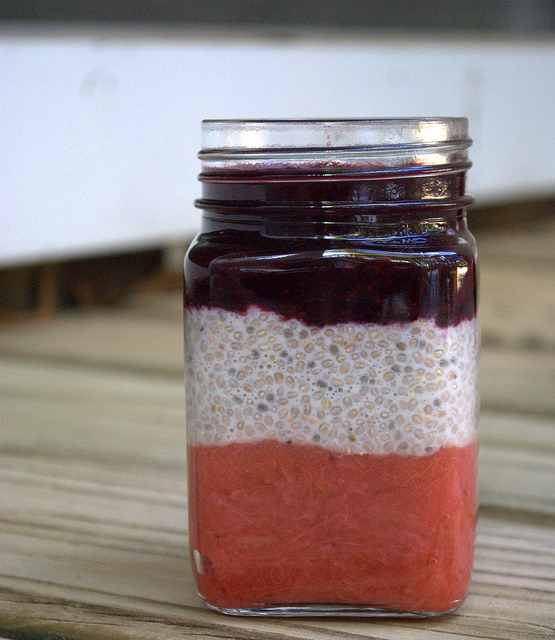
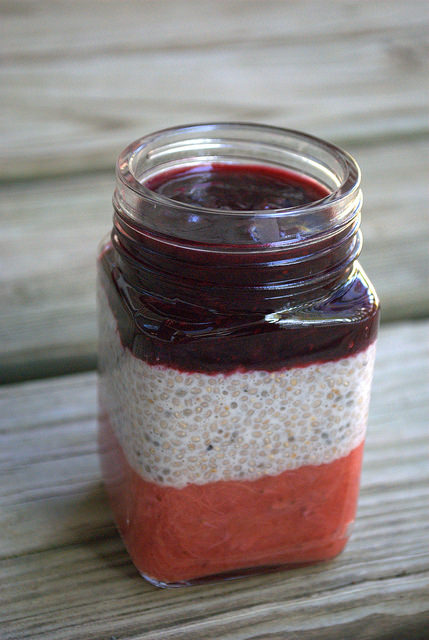
You can use any dish to serve it in, but I like reusing cute clear containers, like this one that originally contained pink salt.
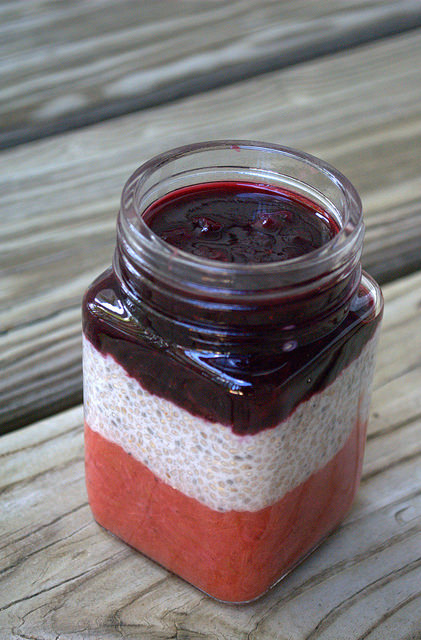
I recommend waiting to layer the parfait until you’re ready to serve — unless you’d like a cool swirl effect!
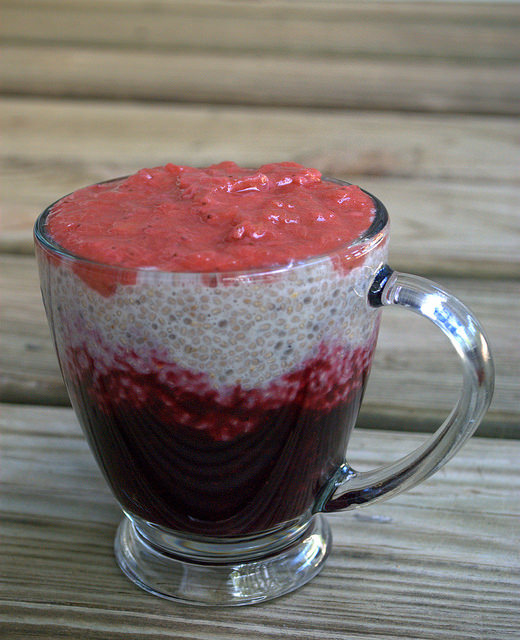
- For the chia pudding:
- ½ cup chia seeds (I used white seeds)
- 1.5 cups of non-dairy milk (I used unsweetened vanilla almond milk)
- Optional – dash of vanilla extract and/or liquid stevia, to taste
- For the blueberry layer:
- 2 cups blueberries
- 1.5 tablespoons of water
- 2 tablespoons of sweetener (I used raw, local honey)
- squeeze of lemon juice (I used freshly squeezed)
- For the strawberry blueberry layer:
- ¾ cup peeled and diced rhubarb
- 1¼ cup of cored and quartered strawberries
- 1.5 tablespoons of water
- 2 tablespoons of granulated sweetener (I like maple sugar here)
- squeeze of lemon or orange juice (I used freshly squeezed)
- Mix chia seeds and non-dairy milk in bowl and refrigerate for at least an hour to allow the chia seeds to absorb some milk and the mixture to thicken. Stir occasionally. You can make this the night or day before and keep in the refrigerator (recommended).
- Place blueberries, water, and sweetener in a sauce pan and stir to combine. Cover with lid and heat over medium-low to medium, depending on your pan and stove top. Once blueberries begin to simmer and pop/burst, remove lid, reduce heat, and stir. Allow blueberries to simmer until all blueberries have burst and you can gently mash blueberries. Remove from heat, transfer to glass bowl, add a squeeze of lemon juice if you like, and allow to cool. Once cool, you can store in the refrigerator until you're ready to layer and serve the parfait.
- Next, place the peeled and diced rhubarb and the cored and quartered strawberries in a bowl. Sprinkle with granulated sweetener (I used maple sugar but coconut sugar would work well too) and allow to sit for 30 minutes. The sugar will macerate the fruit (i.e., soften, release juices, make them even more awesome).
- Add macerated fruit and water to a sauce pan, stir to combine, cover pan, and heat over medium-low to medium heat. Like the blueberries, once the heat begins to break down the berries, remove lid and reduce heat slightly. Stir. Allow to cook until you can mash the rhubarb gently with your spoon, about 10-15 minutes depending on your pan and heat. When done, remove from heat, transfer to glass bowl, add a squeeze of juice, and allow to cool. Once cool, refrigerate if necessary.
- When you're ready to layer your parfait, gather all three layers. Spoon either blueberry or strawberry rhubarb layer into clear serving dish of choice to desired amount. Next, divide the chia pudding into 3-4 servings and gently layer on top of fruit compote. Finally, gently spoon remaining fruit layer on top. You may have leftovers of fruit compote depending on the size of your serving dishes.
- Serve immediately or refrigerate until ready to serve. Depending on the thickness of each layer and your serving dish, the layers may sneak into one another.
- Enjoy and celebrate Independence Day!
What’s on your holiday menu this 4th of July? If you make this red, white, and blue chia pudding parfait, let me know in the comments! Happy eating and happy Independence Day!
